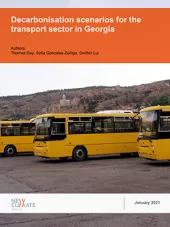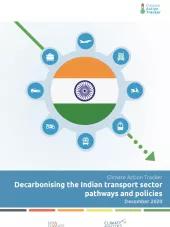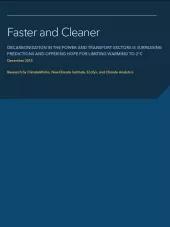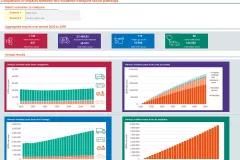Climact and NewClimate Institute explored a future in which the EU effectively targets zero emissions by 2040 for the transport sector, in a study commissioned by Greenpeace. Radical change needs to happen now and all fronts to dacarbonise European mobility within 20 years - seeing that the sector accounts for more than a quarter of European emissions (27%). We present a decarbonisation pathway, highlight current policy gaps and propose required policy packages.
Main Findings:
While supply-side measures are undeniably essential to reducing emissions, this study illustrates how demand-side measures such as demand reduction and a modal shift facilitate the transition by reducing the scale of deployment of new technologies to challenging but plausible levels. The global Covid-19 pandemic has brought with it widespread disruption including a drastic drop in mobility demand as well as global behavioural changes such as remote working that were not conceivable before.
To date, policies to improve the vehicle fleet, such as emission standards and electric vehicle incentives and policies, have been at the core of European and Member State policy developments, with mixed impact on the transport sector. However, the scenario shows that to improve the technical feasibility of the transition, passenger vehicles not only need to shift to lower-emission alternatives, but transport demand and private vehicle use also need to be reduced significantly.
We find that policies to avoid and reduce the need for transport and to shift to more environmentally friendly transport modes have received much less attention, and lack coordination at EU level. Lower passenger transport demand is key since this will directly reduce the technological efforts required, both for direct and indirect electricity demand as well as for e-fuels in air transport.
New and innovative policy solutions will be needed that go beyond existing policies, such as a straight-forward ban of short-to-medium distance flights. Passenger road and air transport needs to shift to rail, public transport and non-motorised transport where applicable. Freight transport needs to shift from road transport to rail and inland waterways. Policies to develop sustainable – especially rail – infrastructure need to be scaled up significantly, and intermodal freight transport should be incentivised more proactively.
Large investments in transport infrastructure are required to enable the transition to zero-emission mobility. This is particularly relevant since today’s decisions on investments oriented towards medium to long-term transport solutions (freight logistics, railways, bus fleets and more) will shape the future of the European transport sector.







